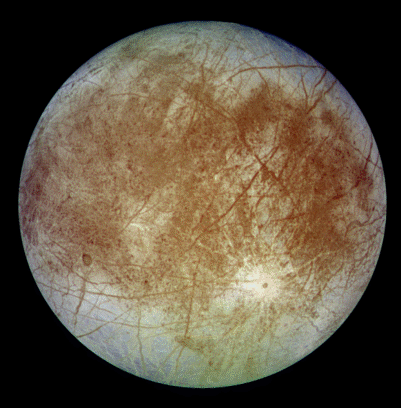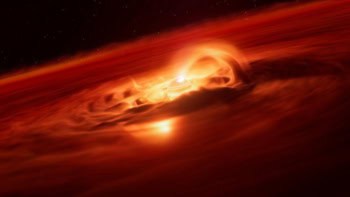The Galileo spacecraft has found the most convincing evidence yet that Europa, one of Jupiter's moons, has oceans of liquid water beneath its icy crust. Margaret Kivelson and co-workers at the University of California at Los Angeles, US, have added strong support to earlier indications that subsurface water exists (2000 Science 289 1340). The presence of water near the surface of Europa, about the size of Earth's moon, would make it a prime candidate for the search for extraterrestrial life.

The latest evidence comes from an analysis of the magnetic fields surrounding Europa. When a conducting body is placed inside a time-varying magnetic field, electrical currents are induced inside the conductor, which in turn produce measurable secondary magnetic fields. In this case the conductor is Europa and the magnetic field is the magnetosphere of Jupiter.
Kivelson’s team inspected data gathered as Galileo passed close to the Jovian moon in January 2000. The spacecraft’s magnetometer showed that the induced magnetic field of Europa changes erratically with time, which suggests the presence of an electrically conducting layer beneath the surface. Another early study had suggested that Europa might have its own permanent magnetic field, but such a field would vary regularly. A continuous layer of water with a composition similar to Earth’s seawater best explains the observations.
Theoretical, geological and spectroscopic arguments all support the subsurface ocean theory, although it is still possible that the layer is made up of graphite or some other carbon-rich material. The Europa orbiter, scheduled for launch in 2003, is expected to establish the existence of the ocean using radar techniques.



